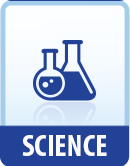|
This section contains 379 words (approx. 2 pages at 300 words per page) |
World of Microbiology and Immunology on Robert Louis Sinsheimer
Born in Washington, D.C., Robert Sinsheimer attended secondary school in Chicago before studying at the Massachusetts Institute of Technology (MIT). At MIT Sinsheimer took his undergraduate degree in quantitative biology before moving on to complete his Ph.D. in biophysics. Sinsheimer initially accepted a faculty position at MIT but moved to Iowa State College in 1949 to take up the post of professor of biophysics.
Sinsheimer became a professor of biophysics at the California Institute of Technology (Caltech) in 1957 and was Chairman of the Caltech Division of Biology from 1968 to 1977. During this period he conducted a series of investigations into the physical and genetic characteristics of a bacteriophage called Phi X 174. These breakthrough studies illuminated the viral genetic processes. Sinsheimer and his colleagues also succeeded for the first time in isolating, purifying, and synthetically replicating viral DNA.
The bacteriophage Phi X 174 was an ideal candidate for study because it contained only a single strand of DNA comprised of about 5,500 nucleotides forming approximately 11 genes. In addition it was easier to obtain samples of the bacteriophage DNA.
In 1977 Sinsheimer left Caltech to become a chancellor of the University of California, Santa Cruz. One reason the position of chancellor appealed to him was that it provided a forum to address his concerns that had developed concerning the social implications and potential hazards of recombinant DNA technology and cloning methods. Sinsheimer was one of the first scientists to question the potential hazardous uses of molecular biology and the ethical implications of the developing technologies. In addition Sinsheimer became committed to promoting scientific literacy among non-scientists.
His early years at Santa Cruz were challenging. During his tenure the university re-established itself as a seat of research and academic excellence. Some of Sinsheimer's accomplishments included the establishment of the Keck telescope, the establishment of programs in agroecology, applied economics, seismological studies, and a major in computer engineering.
Sinsheimer also participated fundamentally in the genesis of the Human Genome Project. In May 1985 Sinsheimer organized a conference at Santa Cruz to consider the benefits of sequencing the human genome. From these and other such deliberations arose the Human Genome Project.
Author of more than 200 scientific papers, Sinsheimer's autobiography, The Strands of a Life: The Science of DNA and the Art of Education, was published in 1994.
|
This section contains 379 words (approx. 2 pages at 300 words per page) |


